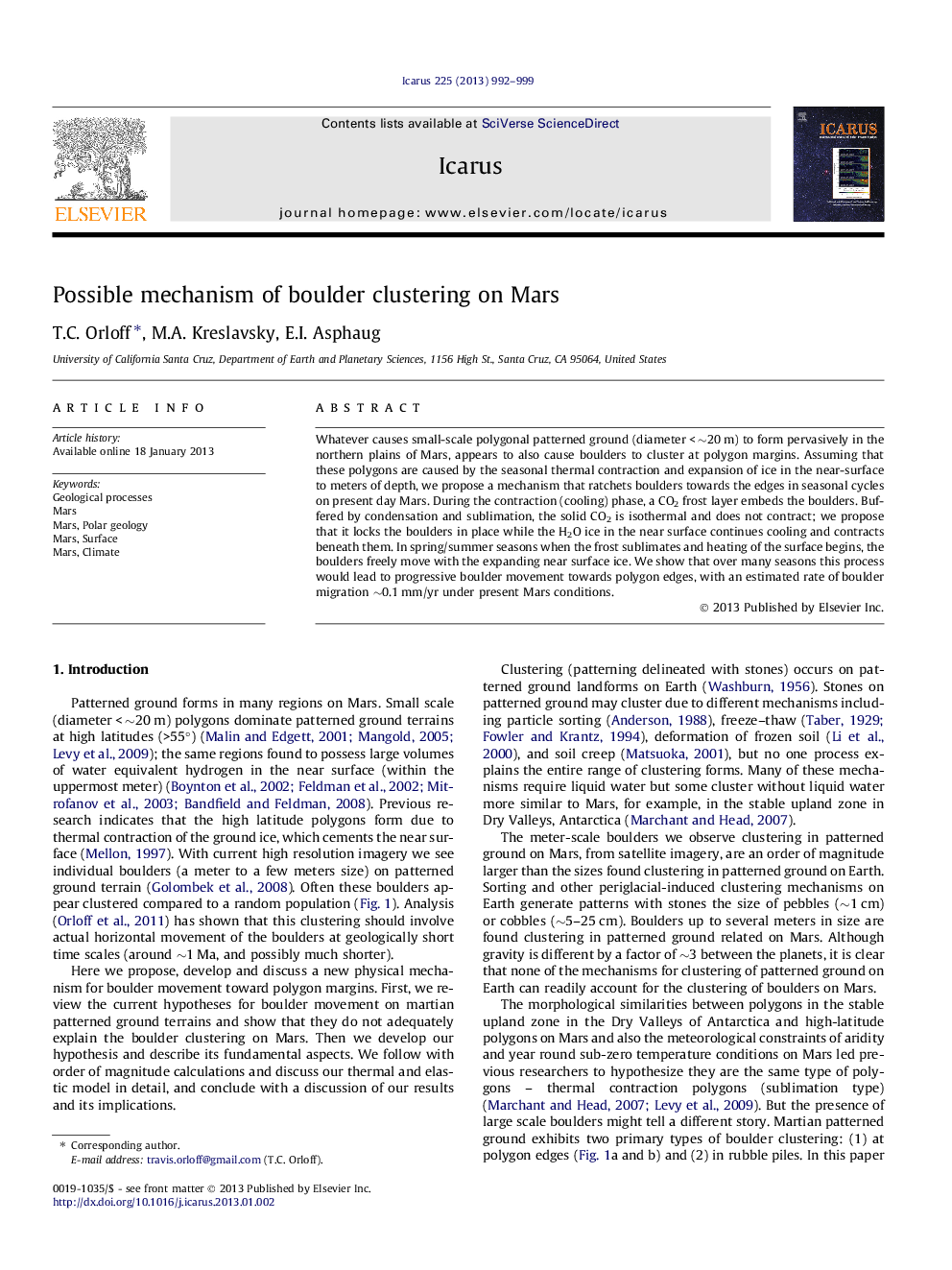| Article ID | Journal | Published Year | Pages | File Type |
|---|---|---|---|---|
| 1773389 | Icarus | 2013 | 8 Pages |
Whatever causes small-scale polygonal patterned ground (diameter < ∼20 m) to form pervasively in the northern plains of Mars, appears to also cause boulders to cluster at polygon margins. Assuming that these polygons are caused by the seasonal thermal contraction and expansion of ice in the near-surface to meters of depth, we propose a mechanism that ratchets boulders towards the edges in seasonal cycles on present day Mars. During the contraction (cooling) phase, a CO2 frost layer embeds the boulders. Buffered by condensation and sublimation, the solid CO2 is isothermal and does not contract; we propose that it locks the boulders in place while the H2O ice in the near surface continues cooling and contracts beneath them. In spring/summer seasons when the frost sublimates and heating of the surface begins, the boulders freely move with the expanding near surface ice. We show that over many seasons this process would lead to progressive boulder movement towards polygon edges, with an estimated rate of boulder migration ∼0.1 mm/yr under present Mars conditions.
► We propose a mechanism for boulder clustering in polygon edges on Mars. ► Seasonal CO2 frost locks boulders in place while ground ice contracts in winter. ► Boulders move with ground ice expansion in summer after CO2 frost sublimation. ► Results in progressive movement of boulders toward polygon edges. ► Rates of boulder movement depend strongly on local climate.
